Cast Iron Pork Tenderloin is smothered in Dijon mustard and fresh herbs, seared in a cast iron skillet, and transferred to the oven to finish cooking. I made this recipe a one-pot meal by adding chopped baby potatoes and carrots to the skillet!
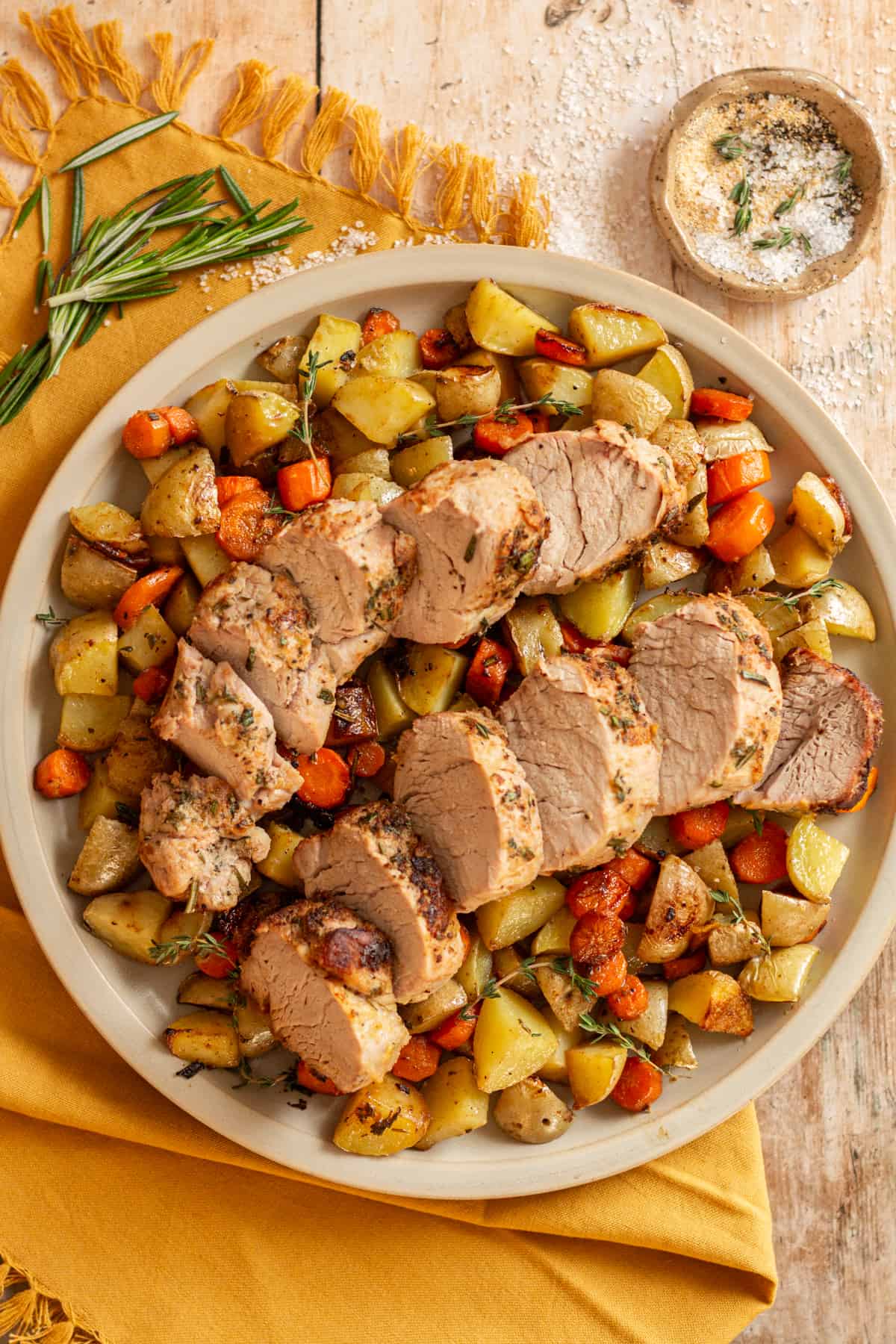
Pork tenderloin is a lean, mild, and tender cut of meat. It pairs well with all side dishes and cooks in under 30 minutes.
Cooking pork tenderloin in cast iron allows you to get a golden brown and flavorful sear on the outside of the tenderloin. Then, there's no need to dirty another dish! You transfer the skillet straight to the oven to finish cooking.
Cooking in cast iron is one of my favorite ways to cook! If you're looking for more cast-iron recipes then you need to make my Cast Iron Skillet Chicken Breast, Blackened Pork Chops, and any of my Dutch Oven recipes!
Jump to:
Why you'll love this recipe
- The hands-on prep time for this recipe is 15 minutes or less.
- My recipe for pork tenderloin in cast iron is a one-pot meal because I have you add baby potatoes and chopped carrots before it goes into the oven.
- This dinner recipe presents beautifully. It's full of bright colors and can be garnished with leftover fresh herbs. If you're looking for an easy, delicious dinner to serve to guests, THIS IS IT.
- If you're feeding several adults, you can easily double this recipe by cooking a second tenderloin in the same pan.
- Pork tenderloin is perfect for those picky kiddos who only want to eat plain, white, chicken breast. Pork tenderloin has a mild flavor that is very similar to chicken!
Ingredients
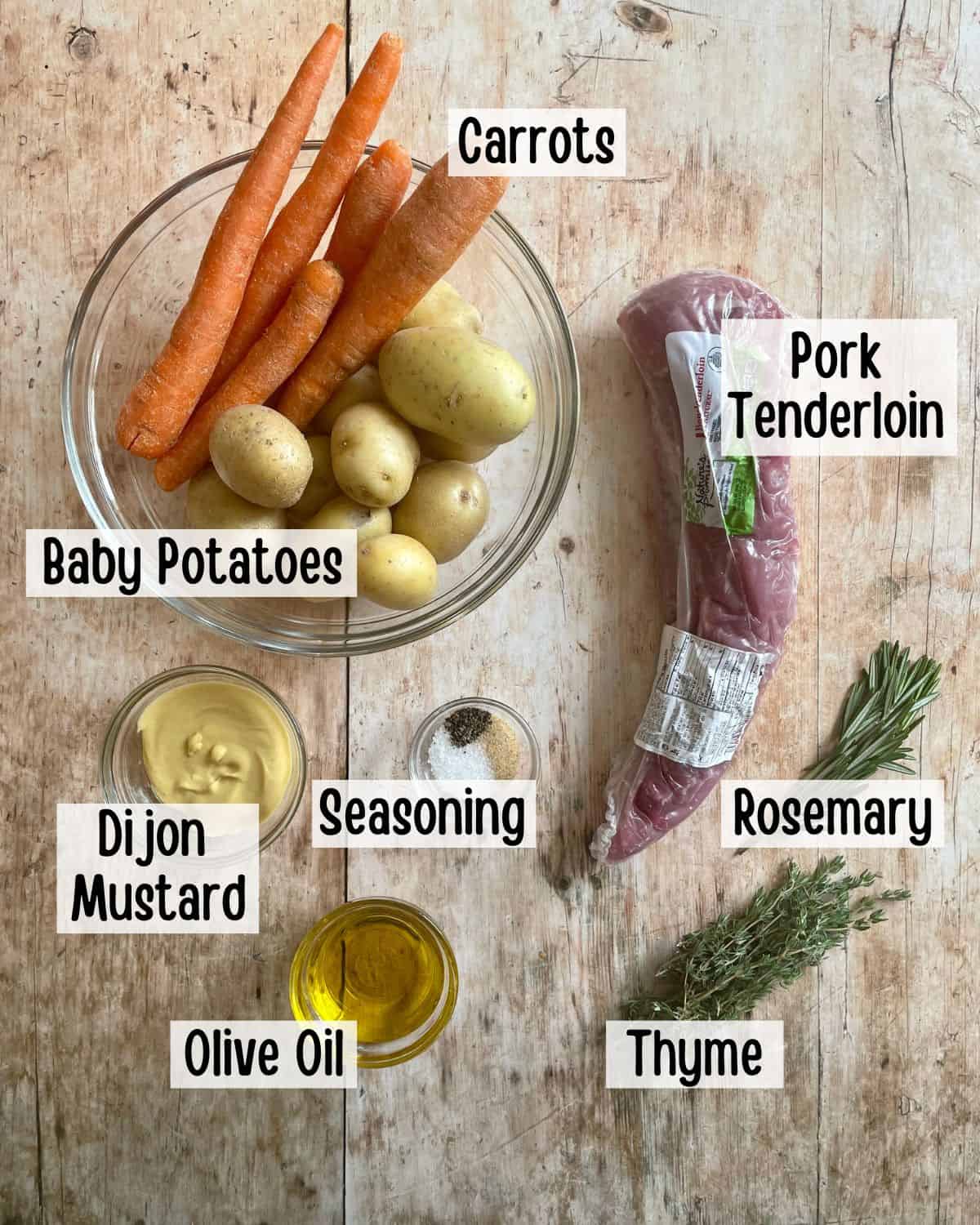
Pork tenderloin: Try to find a pork tenderloin that is around 2 pounds. Pork tenderloin is a long, narrow, boneless, extra-lean, cut of meat. Don't confuse pork tenderloin with pork loin! Pork loin is wide, flat, and thick. Pork loin can be bone-in or boneless, and also has a layer of fat over the top called a fat cap.
Potatoes and carrots: Baby potatoes and peeled carrots are chopped, seasoned with kosher salt, and added to the cast iron skillet right before it gets transferred into the oven.
Dijon mustard: Dijon mustard and extra virgin olive oil are mixed together and smothered over the entire tenderloin before coating it in fresh herbs. Look for a smooth and strongly flavored Dijon mustard. I like Maille Dijon Mustard.
Fresh herbs: Fresh thyme and fresh rosemary are combined with kosher salt, black pepper, and garlic powder before they're sprinkled over the entire pork tenderloin.
Equipment needed
- Cast iron skillet - I like to use my non-enameled, 12-inch Lodge Cast Iron skillet.
- You'll need a cutting board and chopping knife to chop the fresh herbs and remove the silver skin from the top of the tenderloin.
- Measuring spoons are also helpful for accurately measuring the fresh herbs and seasonings.
How to make Cast Iron Pork Tenderloin
Step 1: Chop the baby potatoes and carrots into bite-sized pieces. You want the potatoes and carrots to cook just as quickly as the pork does, so you'll need them chopped pretty small.
Add them to a glass bowl, drizzle with olive oil, and season with kosher salt.
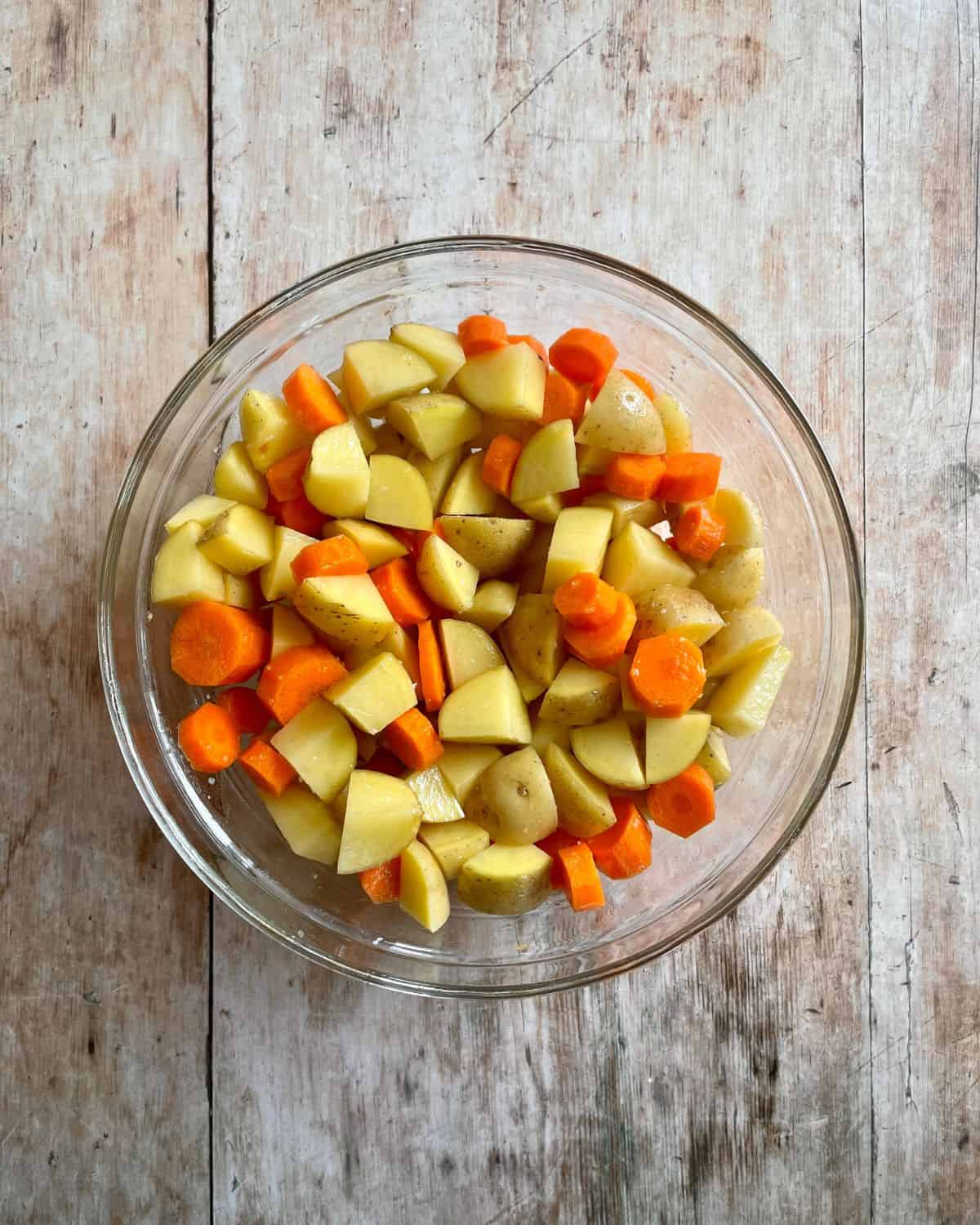
Step 2: Remove the silver skin from the pork tenderloin. Silver skin is tough connective tissue that doesn't caramelize or melt like fat does. It's hard to chew and flavorless. You'll definitely want to remove it.
The silver skin is only on one side of the tenderloin. It's a small white/grey patch that runs about ½ of the way down the tenderloin.
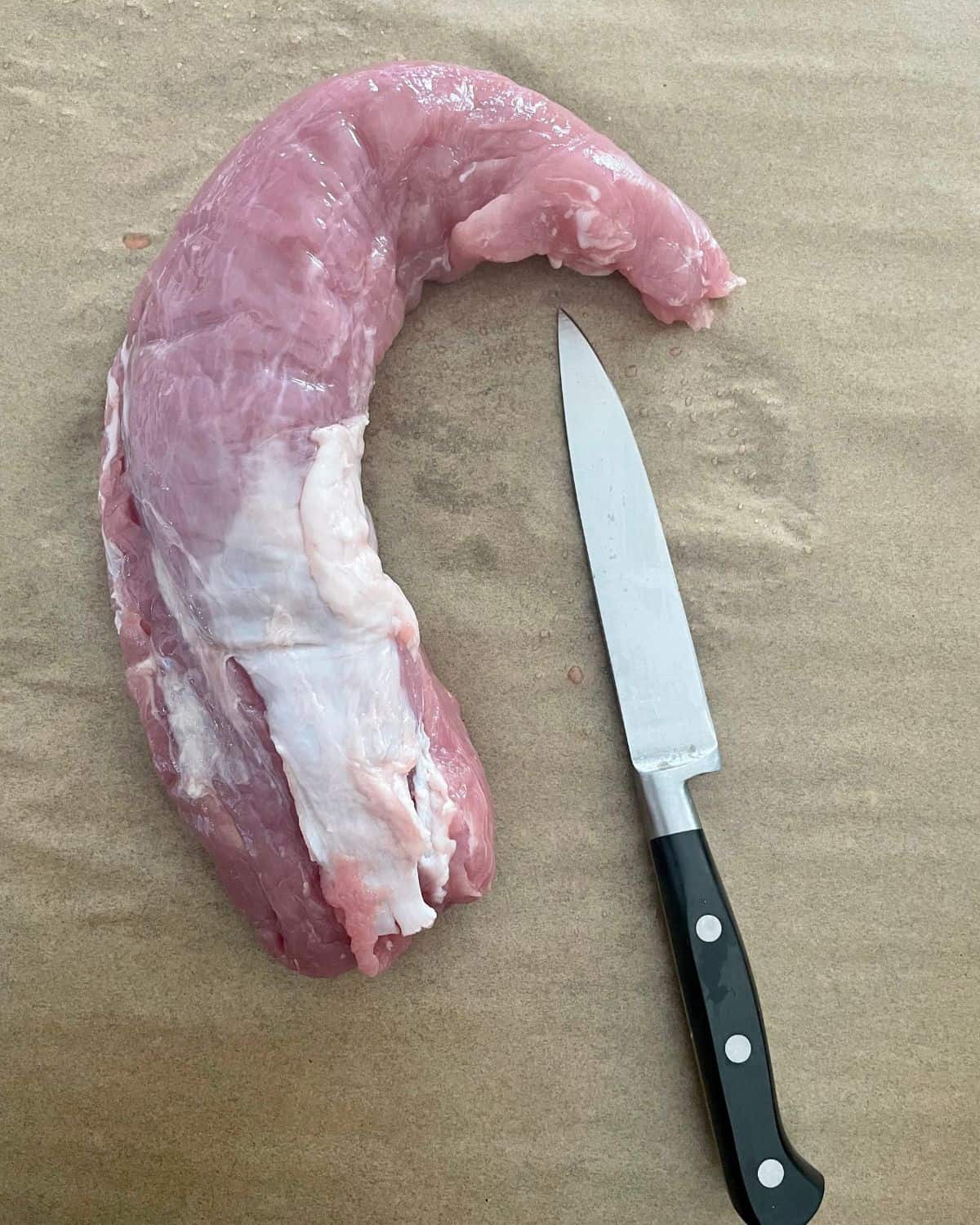
Step 3: Use a sharp knife to cut the silver skin off. You'll need to angle your knife down into the tenderloin and fully cut the patch away. It won't easily just pull off.
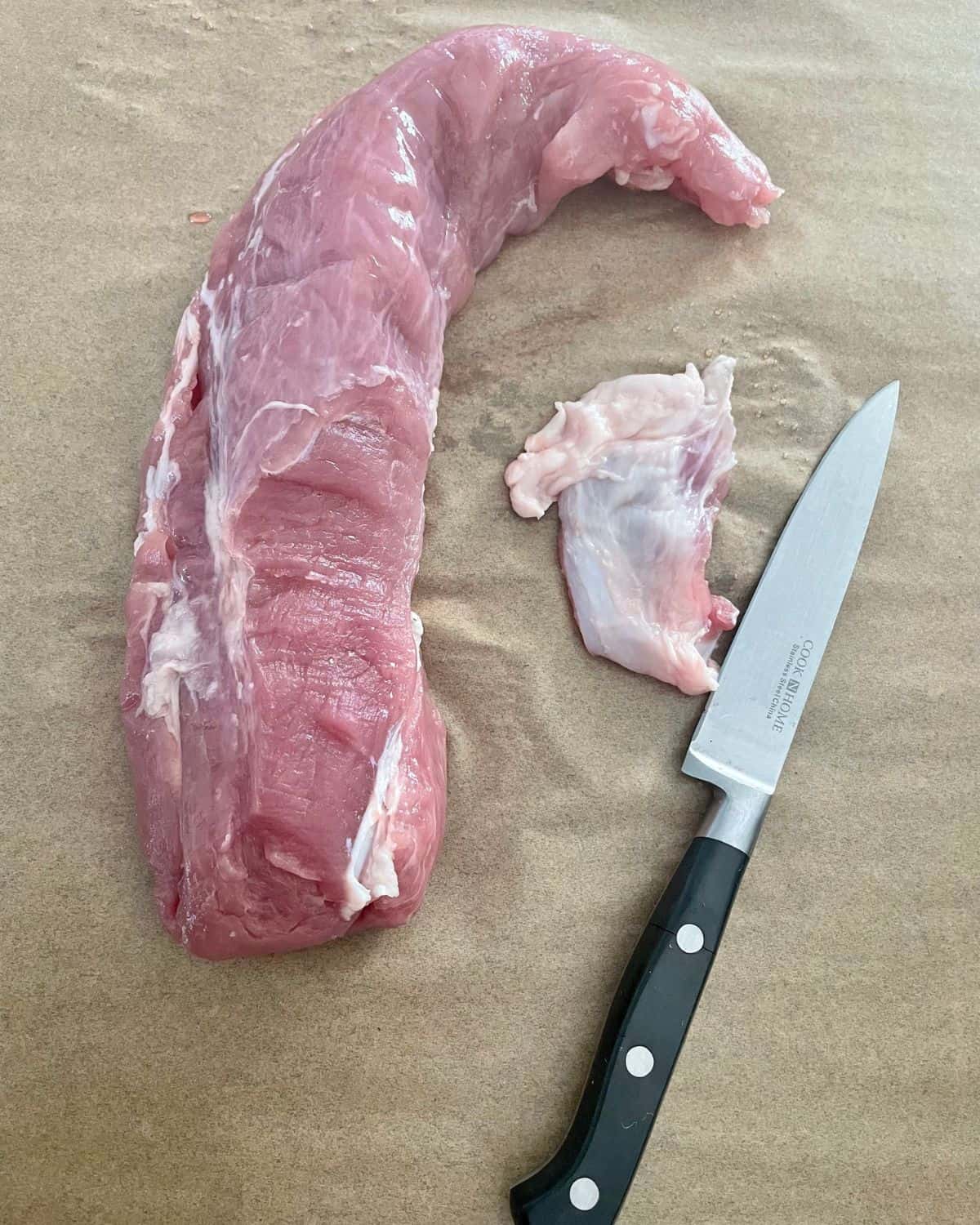
Step 4: Mix the Dijon mustard and 1 tablespoon of extra virgin olive oil together in a small bowl. In a separate small bowl, combine the kosher salt, black pepper, garlic powder, fresh thyme, and fresh rosemary.
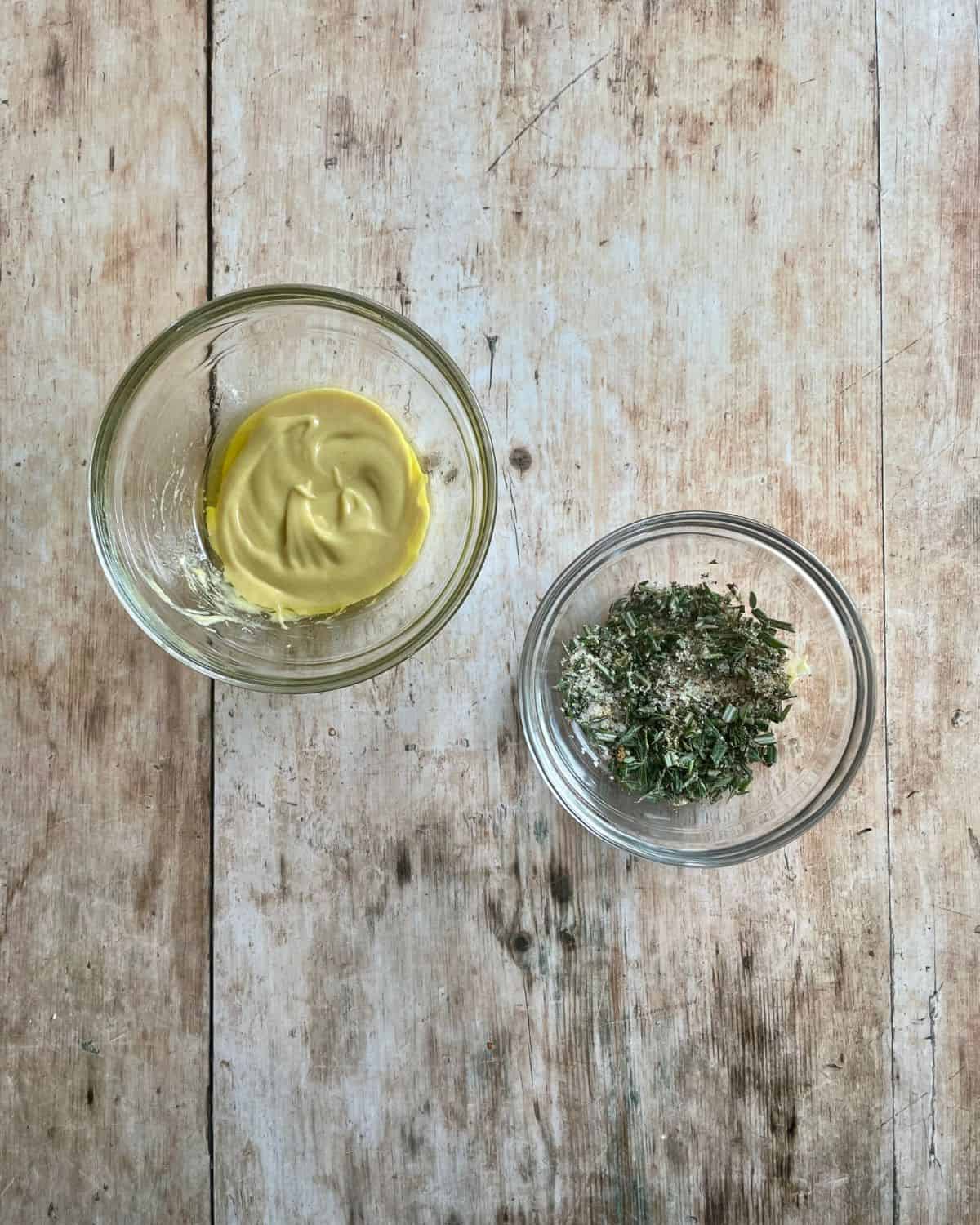
Step 5: Smother all sides of the pork tenderloin with the mustard and olive oil blend. Sprinkle the dried and fresh herbal seasoning blend on all sides of the tenderloin.

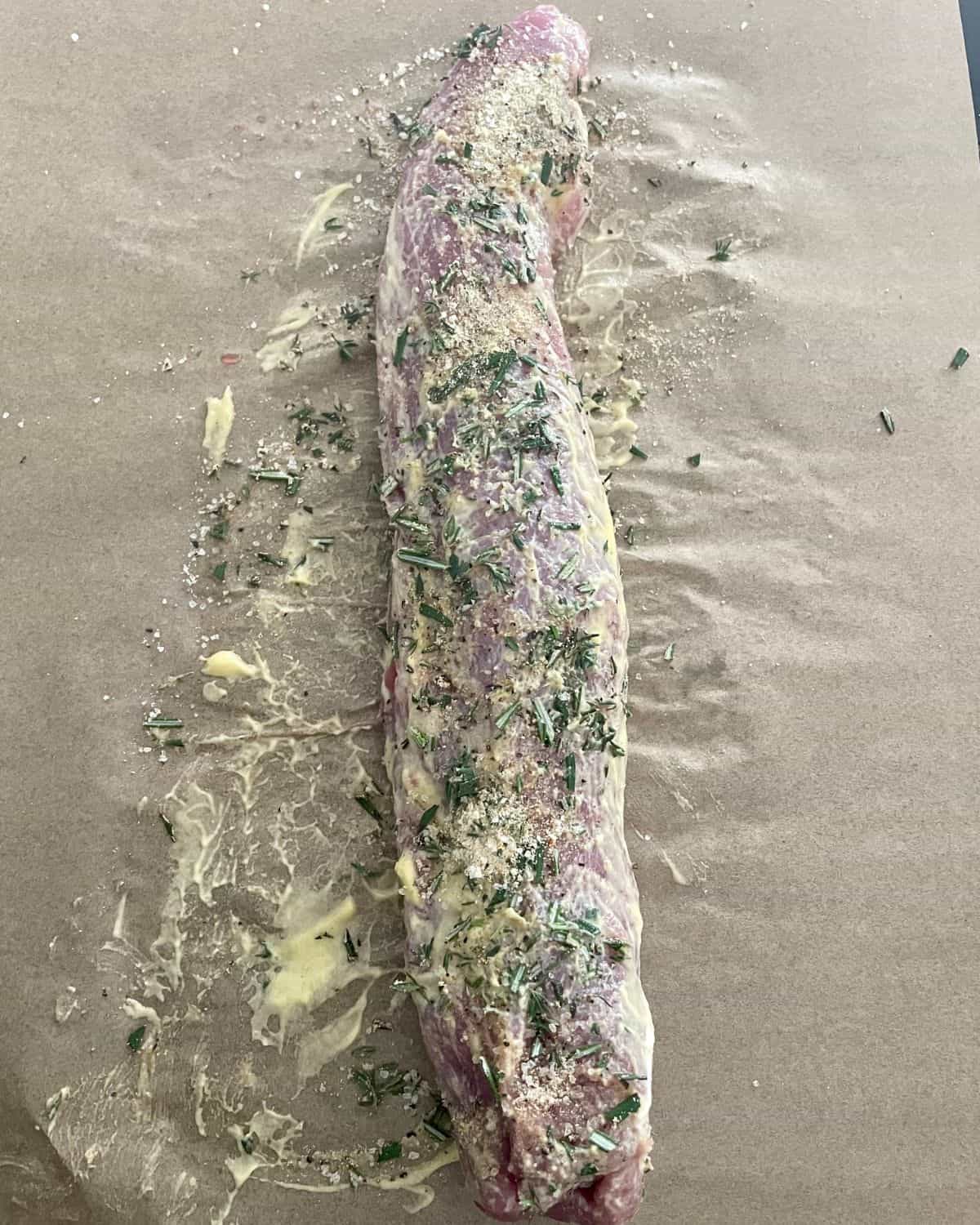
Step 6: Transfer the pork tenderloin to a hot cast iron skillet over medium heat. Brown all sides of the tenderloin for about 2 minutes per side.
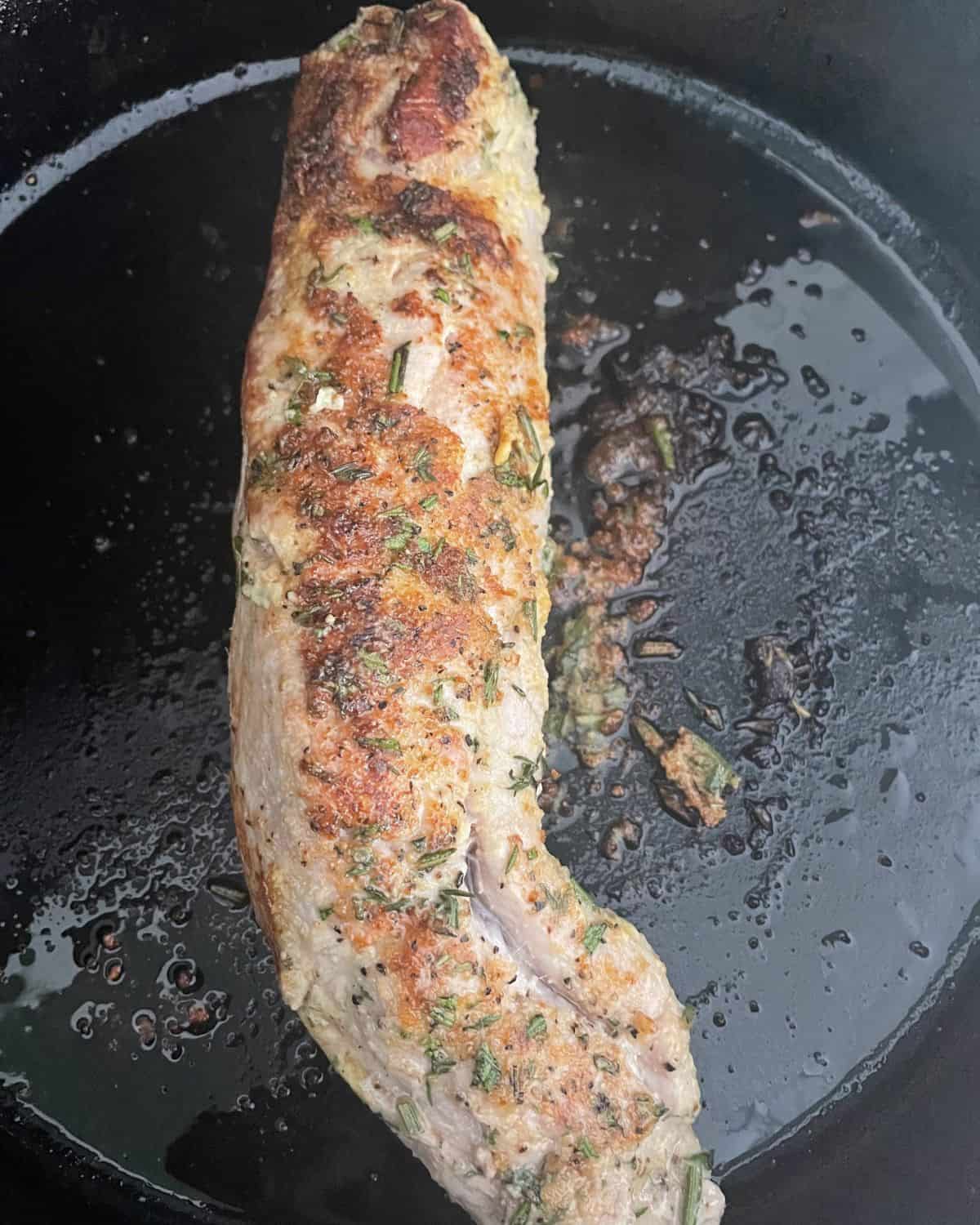
Step 7: Add the potatoes and carrots to the hot skillet. Transfer the cast iron skillet to your preheated oven. Cook the Cast Iron Pork Tenderloin for 20 minutes at 400°F.
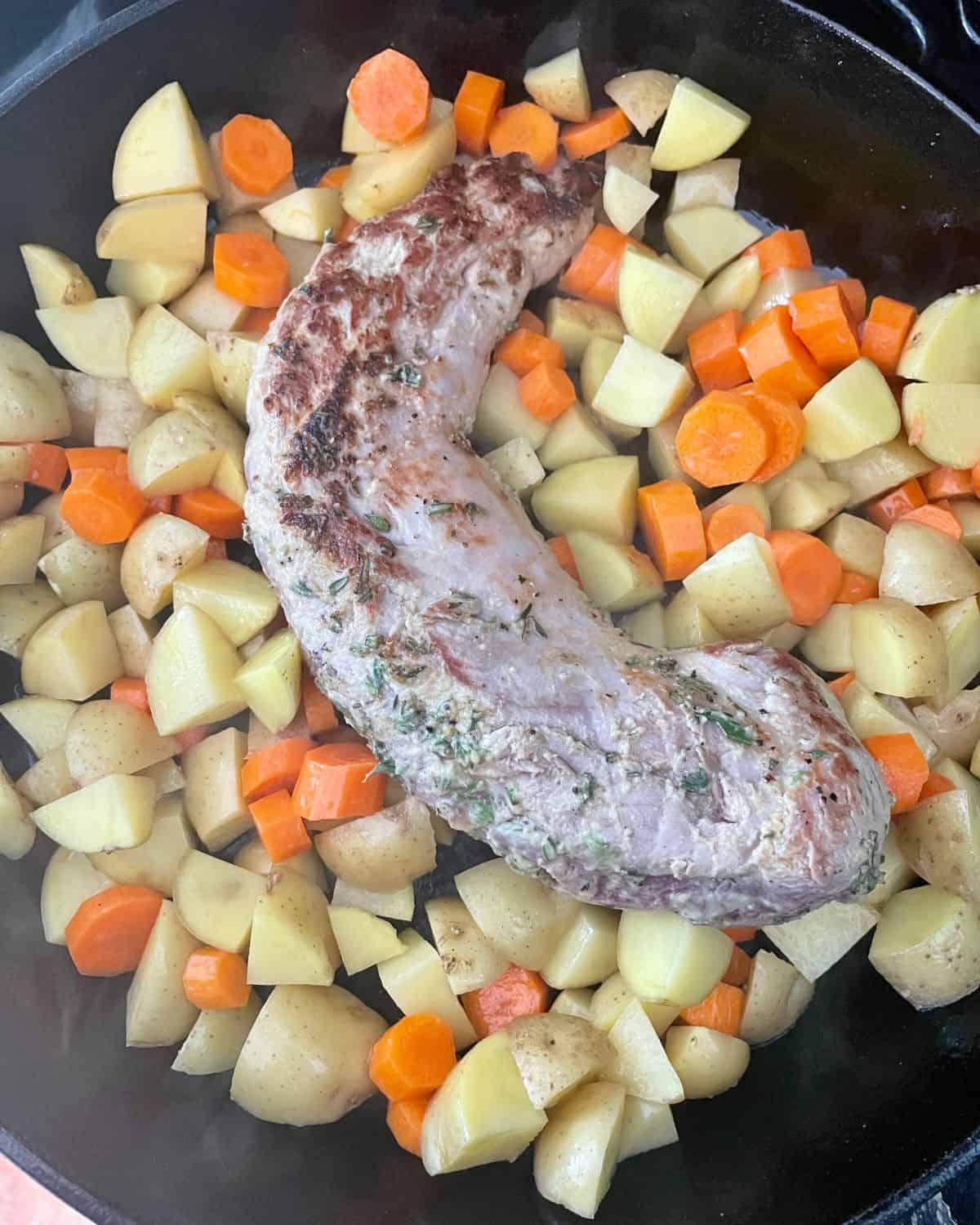
Step 8: After 20 minutes, check the internal temperature of the pork using an instant-read thermometer. You should cook pork tenderloin to an internal temperature of at least 145°F. I like to cook my tenderloin to 150°F. Continue cooking your tenderloin as needed.
Depending on the size of your pork, it could take up to 30 minutes to fully cook. If the roasted pork tenderloin fully cooks before the potatoes and carrots, remove the cooked pork tenderloin from the pan and continue cooking the potatoes and carrots until they're fork-tender.
Let the pork rest for at least 10 minutes before slicing it into rounds. Serve your oven-roasted pork with the roasted vegetables and enjoy!
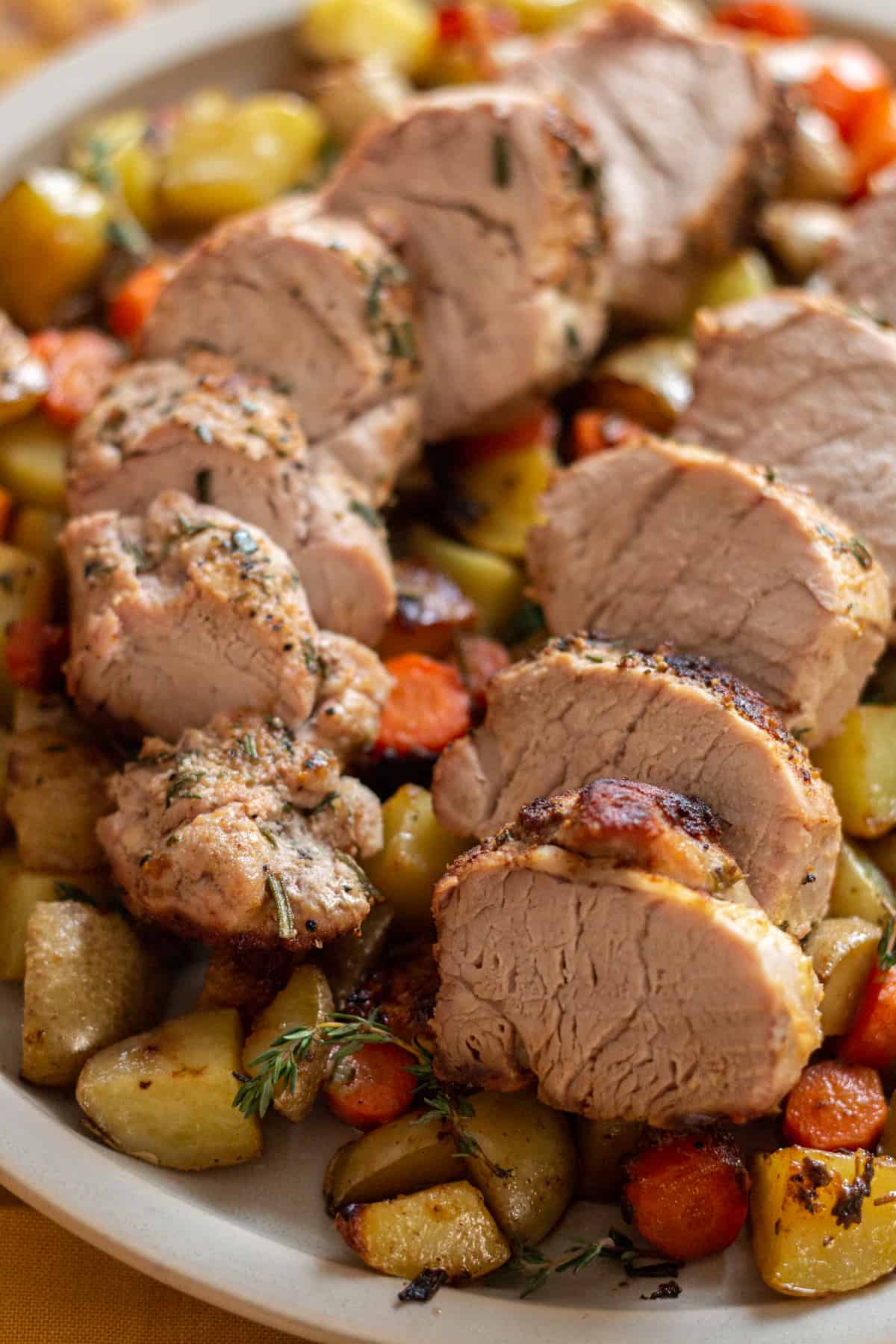
Substitutions and variations
Vegetables: Any root vegetable that holds up well to roasting can be used in place of potatoes and carrots. If you'd like to make this recipe low-carb, you can completely eliminate the potatoes. I think parsnips, turnips, beets, garlic, and onions would all be delicious.
Fresh herbs: I chose to use fresh rosemary and fresh thyme. Fresh sage, parsley, chives, and green onions would also be delicious additions.
How to store, freeze, and reheat
How to store: Store leftover tenderloin in a glass, airtight container in the refrigerator for up to 3 days.
How to freeze: Pork roasts can be frozen for up to two months. Wrap the cooked roast tightly in plastic wrap and then store it in a freezer-safe plastic bag.
How to reheat: Cooked pork tenderloin can be reheated in the microwave, oven, or on the stovetop. You do have to be careful that you don't dry it out when you're reheating it, though. You'll want to start with very low temperatures and times.
Reheat in the microwave for 30 seconds at a time, until desired warmth is reached. You can cover the pork with a wet paper towel to try to prevent it from drying out.
Reheat on the stovetop in a small skillet over low heat. Add oil to the skillet and use your lowest burner.
Reheat pork in the oven at 325°F. Place the tenderloin in a baking dish and cover the dish with aluminum foil.
What to serve with pork tenderloin
This pork tenderloin recipe is a really warm and cozy meal. Even though this is a one-pot dish, you could still serve it with some additional side dishes like my Asparagus Salad or any of the delicious sides below.
Frequently asked questions
Pork tenderloin can be cooked in the oven, air fryer, instant pot, slow cooker, and on the grill. Pork tenderloin is best cooked at a higher temperature for a short amount of time. This means the oven and the grill are the two best ways to cook pork tenderloin.
Pork tenderloin is a leaner cut of meat, which means it's low in fat. Lean cuts of meat are best cooked quickly at higher temperatures.
You do not need to cover pork tenderloin. Baking pork tenderloin uncovered will give it more of a crisp crust on the outside.
Cast iron skillet recipes you'll also like
📖 Recipe
PrintCast Iron Pork Tenderloin
Cast Iron Pork Tenderloin is smothered in Dijon mustard and fresh herbs, seared in a cast iron skillet, and transferred to the oven to finish cooking. I made this recipe a one-pot meal by adding chopped baby potatoes and carrots to the skillet!
- Prep Time: 15 minutes
- Cook Time: 25 minutes
- Total Time: 40 minutes
- Yield: 4 servings 1x
- Category: dinner
- Method: roasting
- Cuisine: American
- Diet: Gluten Free
Ingredients
- 2 pounds pork tenderloin (1 tenderloin)
- 1 pound baby potatoes
- ½ pound carrots
- 3 tablespoons extra virgin olive oil (divided)
- 1 teaspoon kosher salt (divided)
- 1 tablespoon Dijon mustard
- 2 teaspoons fresh thyme - chopped
- 2 teaspoons fresh rosemary - chopped
- 1 teaspoon garlic powder
- ¼ teaspoon ground black pepper
Instructions
- Preheat your oven to 400°F.
- Chop the baby potatoes and carrots into bite-sized pieces. You want the potatoes and carrots to cook just as quickly as the pork does, so you'll need them chopped pretty small. Add them to a glass bowl, drizzle with 1 tablespoon of olive oil, and season with ½ teaspoon of kosher salt.
- Remove the silver skin from the pork tenderloin. Silver skin is tough connective tissue that doesn't caramelize or melt like fat does. It's hard to chew and flavorless. You'll definitely want to remove it. The silver skin is only on one side of the tenderloin. It's a small white/grey patch that runs about ½ of the way down the tenderloin. Use a sharp knife to cut the silver skin off. You'll need to angle your knife down into the tenderloin and fully cut the patch away.
- Mix the Dijon mustard and 1 tablespoon of extra virgin olive oil together in a small bowl.
- In a separate small bowl, combine the rest of the kosher salt, fresh thyme, fresh rosemary, garlic powder, and black pepper.
- Smother all sides of the pork tenderloin with the mustard and olive oil blend. Sprinkle the dried and fresh herb seasoning blend on all sides of the tenderloin.
- Heat the remaining tablespoon of olive oil in a cast iron skillet over medium heat. Transfer the pork tenderloin to the hot skillet. Brown all sides of the tenderloin for about 2 minutes per side.
- Add the potatoes and carrots to the hot skillet. Transfer the cast iron skillet to your preheated oven. Cook the pork tenderloin and vegetables for 20 minutes at 400°F.
- After 20 minutes, check the internal temperature of the pork using an instant-read thermometer. You should cook pork tenderloin to an internal temperature of at least 145°F. I like to cook my tenderloin to 150°F. Continue cooking your tenderloin as needed. Depending on the size of your pork, it could take up to 30 minutes to fully cook. If the pork fully cooks before the potatoes and carrots, remove the cooked pork tenderloin from the pan and continue cooking the potatoes and carrots until they're fork-tender.
- Let the pork rest for at least 10 minutes before slicing it into rounds. Serve your oven-roasted pork with the roasted vegetables and enjoy!
Notes
- The nutrition information shown below is an estimate provided by an online nutrition calculator. It should not be considered a substitute for professional medical advice.
Nutrition
- Serving Size:
- Calories: 478
- Sugar: 4 g
- Sodium: 740.8 mg
- Fat: 19.3 g
- Carbohydrates: 24.4 g
- Fiber: 4.7 g
- Protein: 50.1 g
- Cholesterol: 147.4 mg
Hungry for more?
Follow me on Facebook, Instagram, and Pinterest!
Check out my highlights on Instagram for weekly family dinner ideas!
Did you make this recipe? Tell me all about it in the comments below! I love hearing from my followers and answering any of your questions!



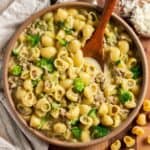
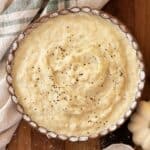
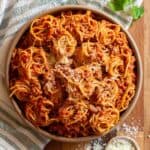
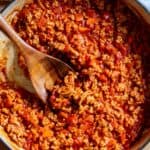
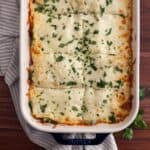


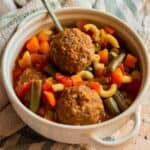
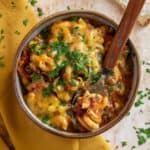

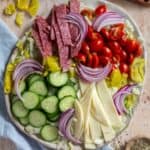
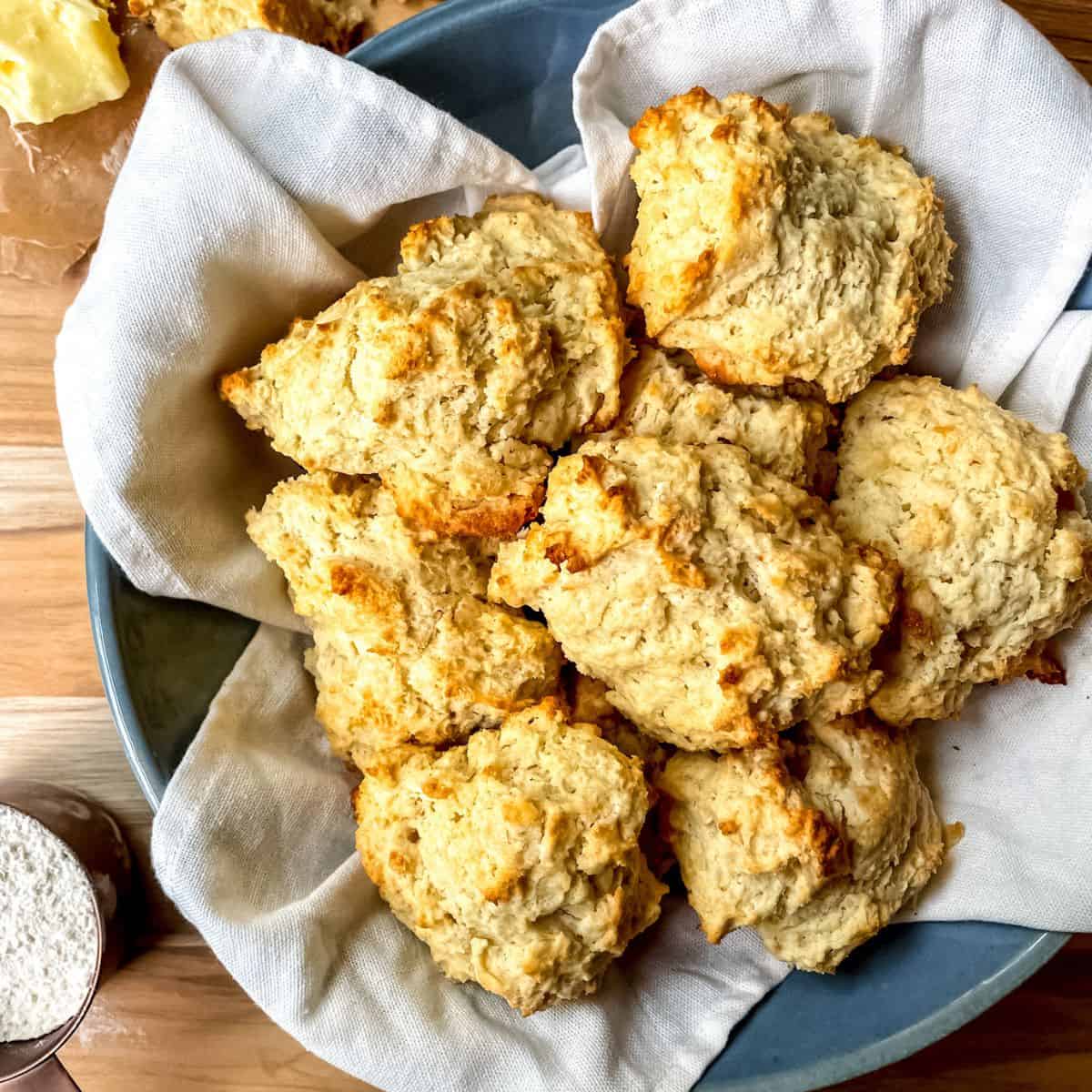
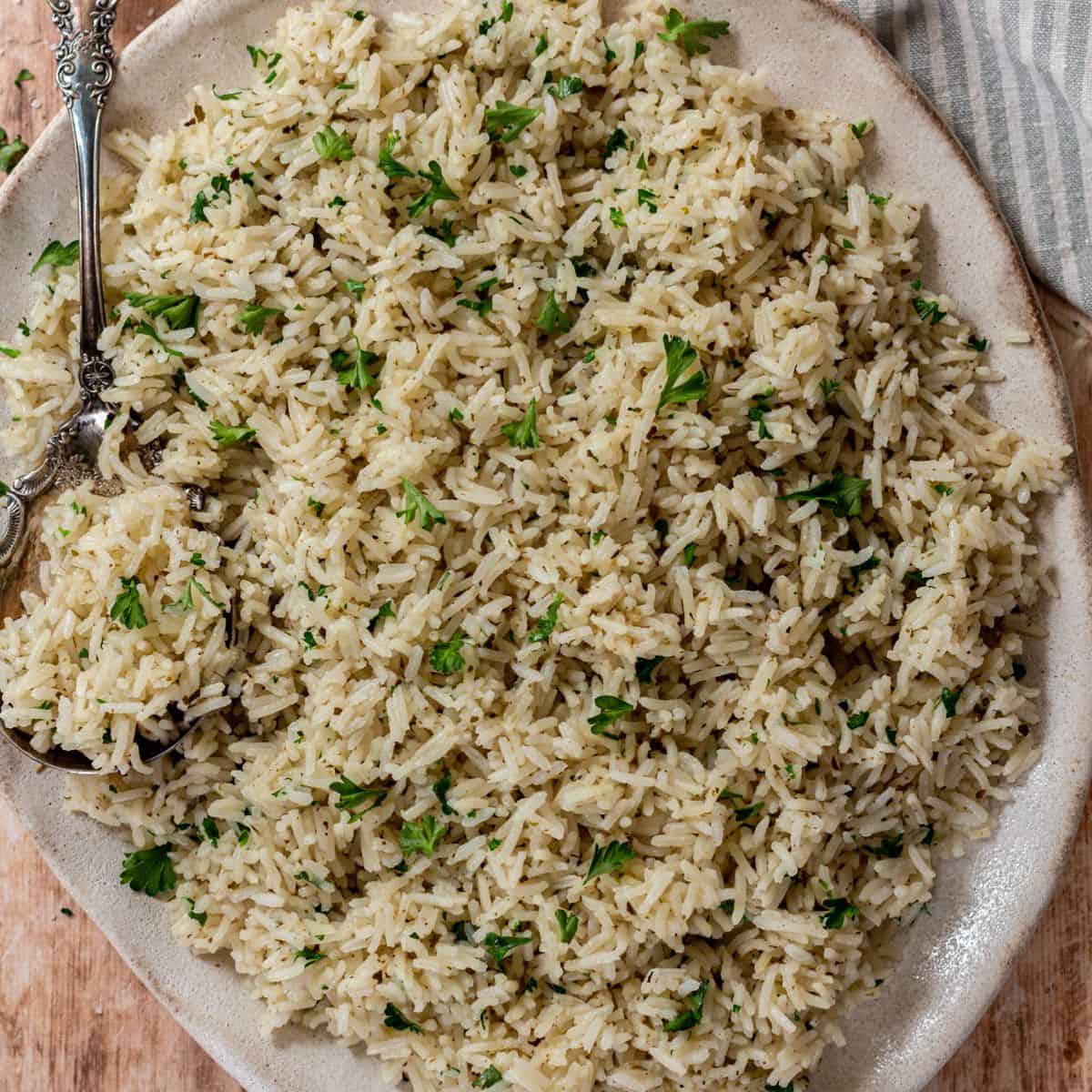
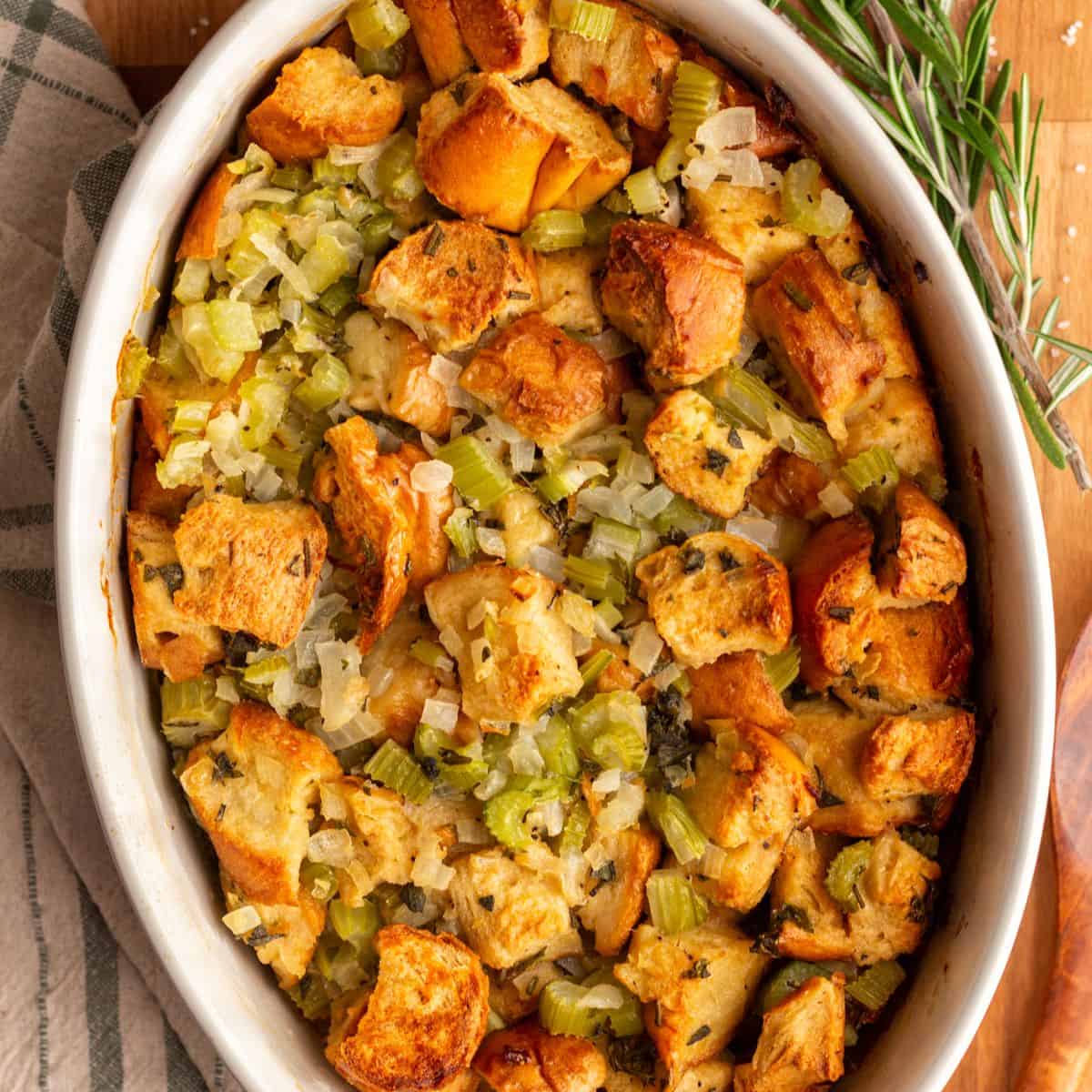
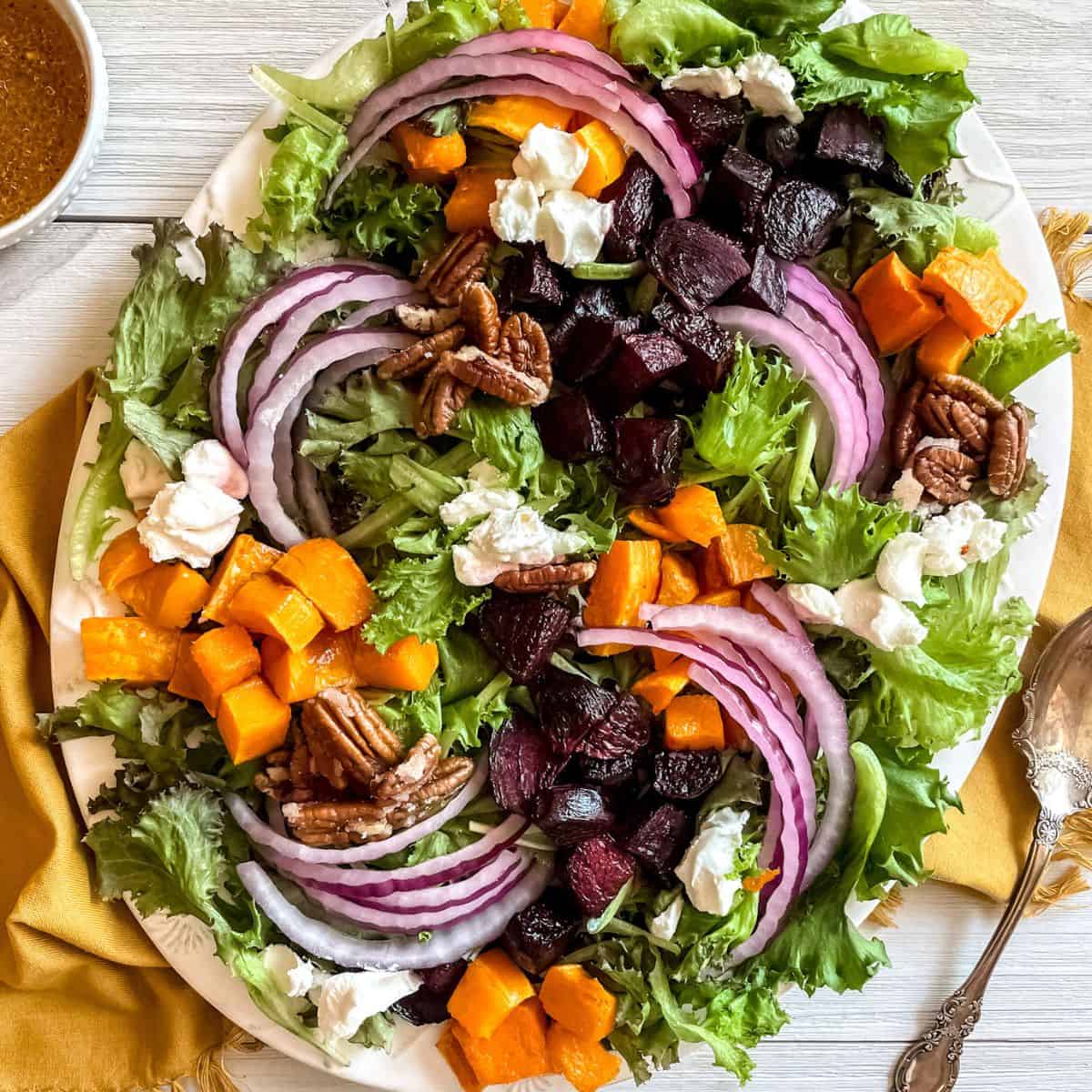
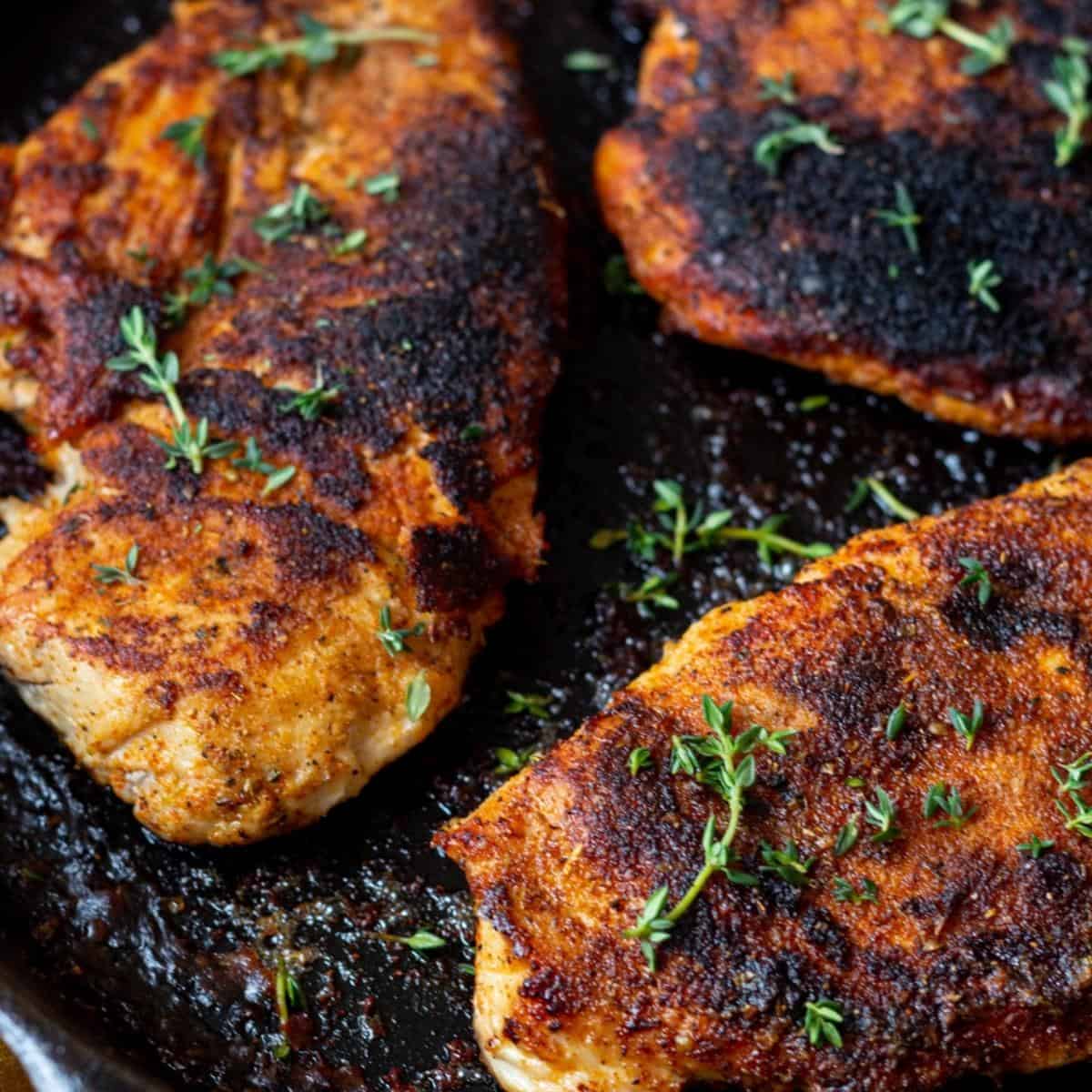
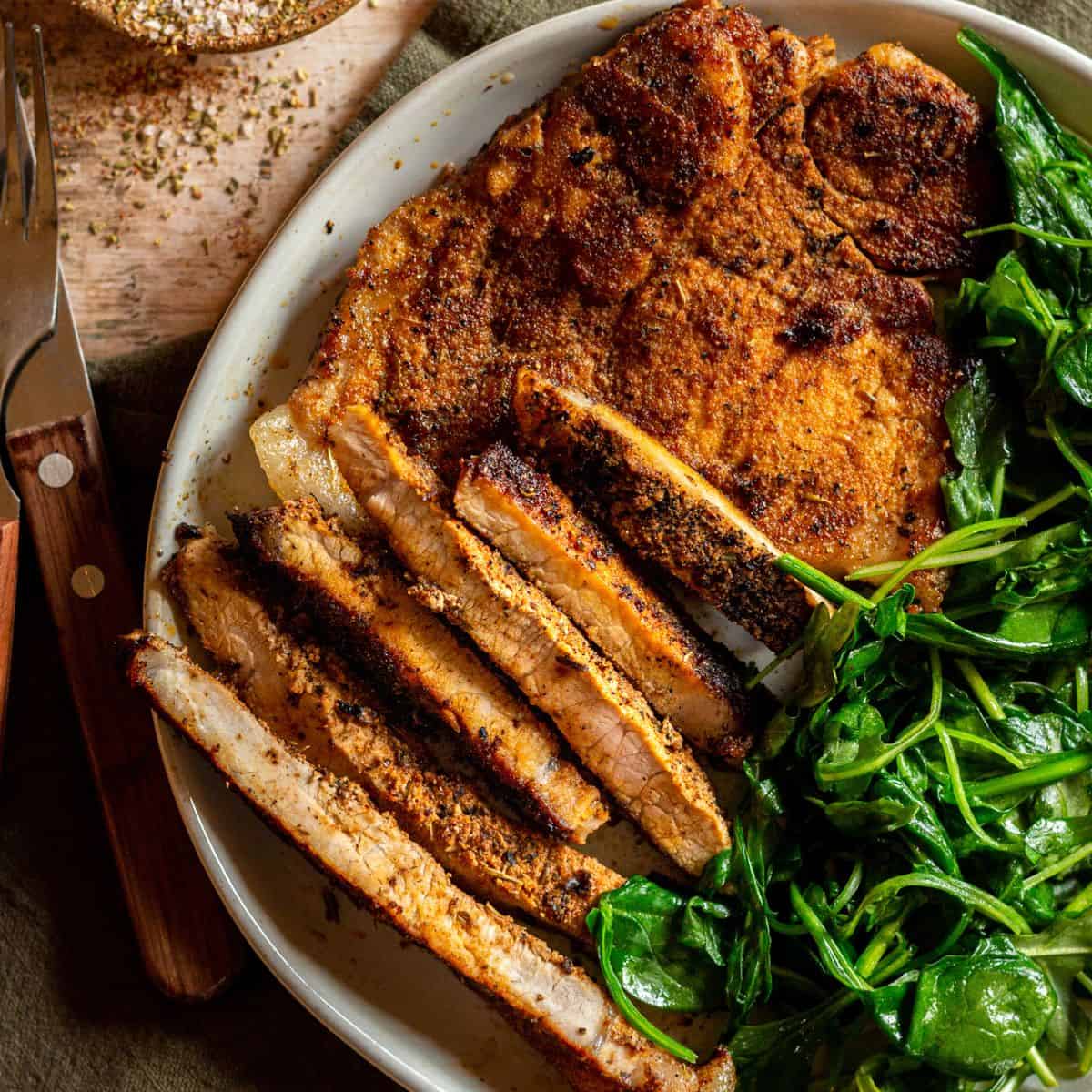
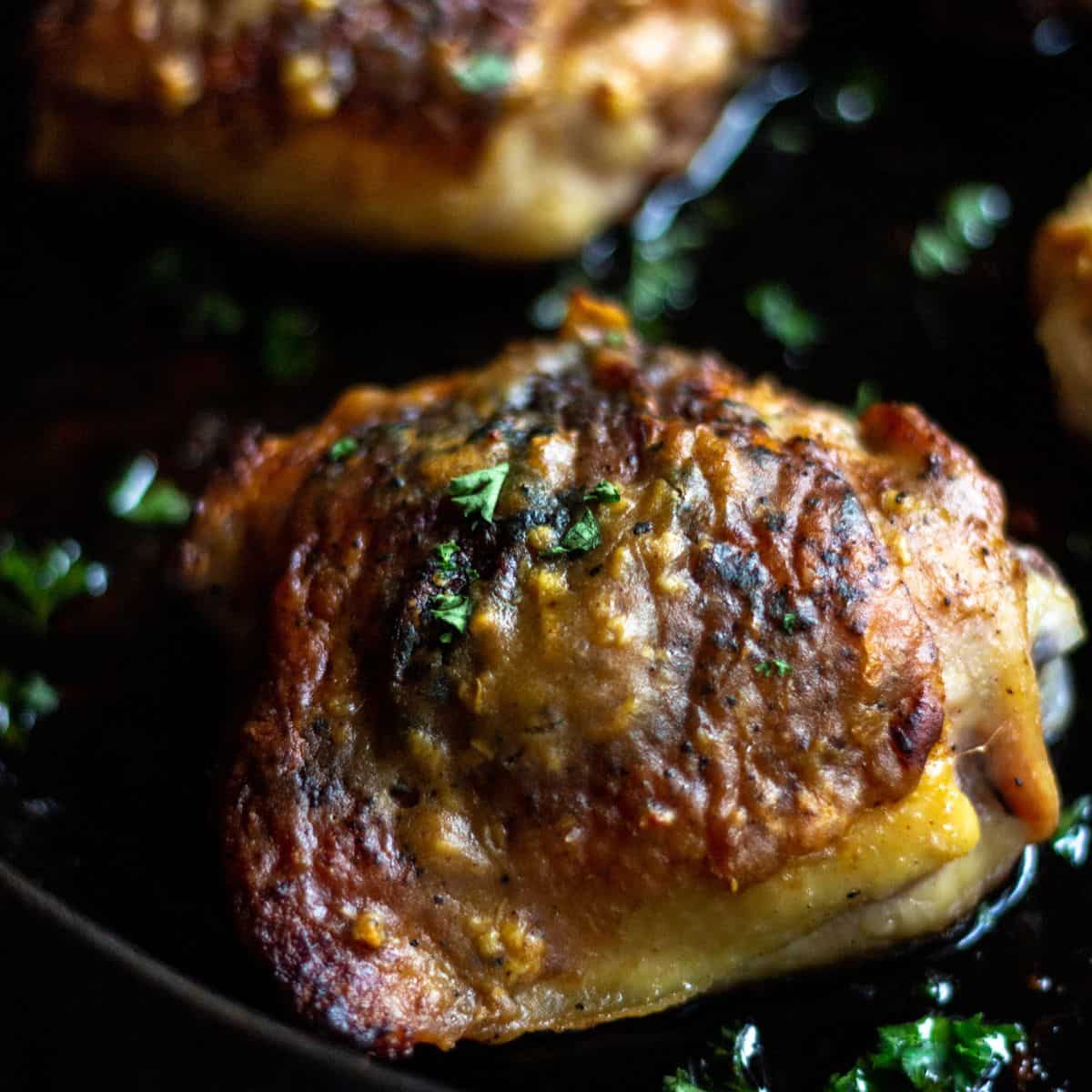
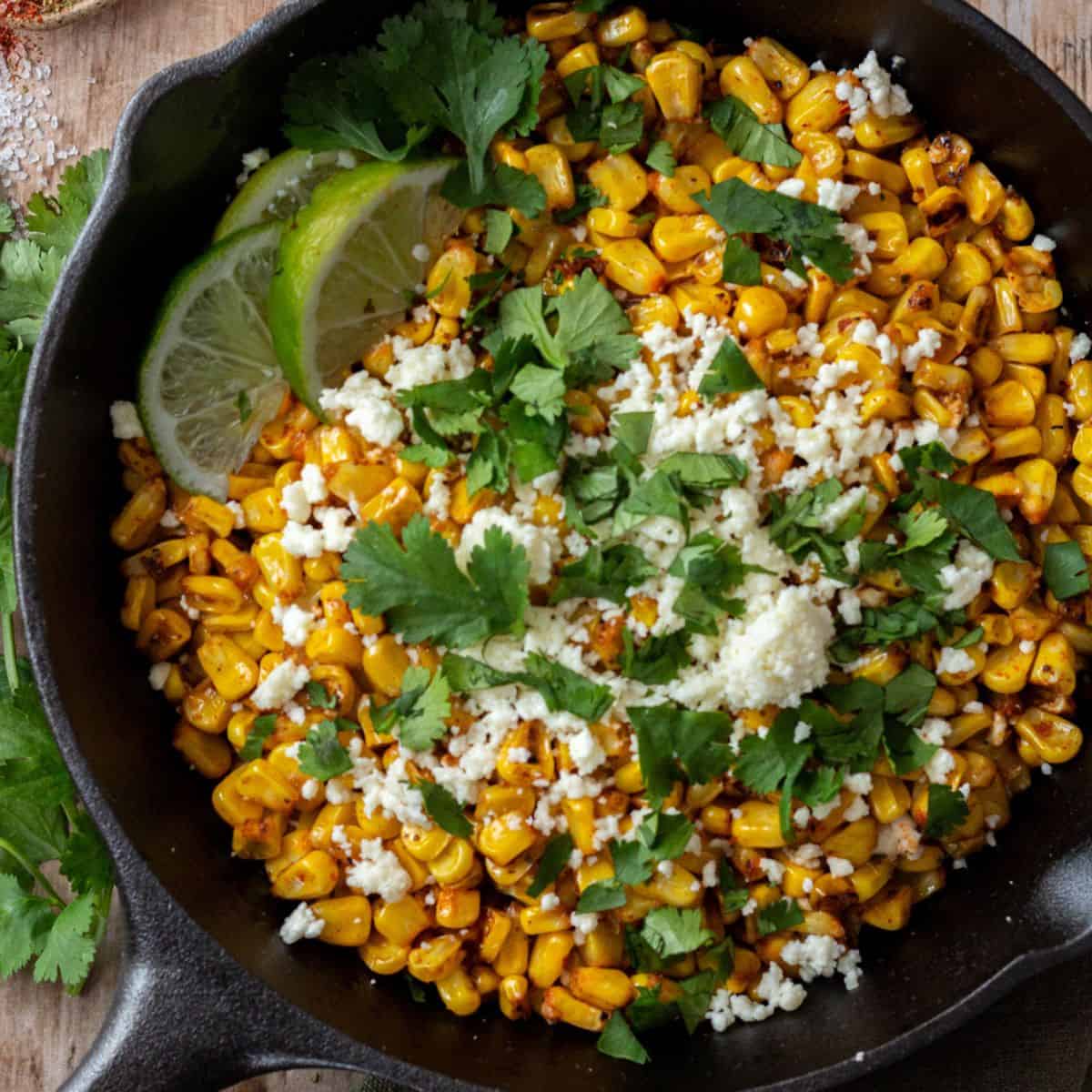

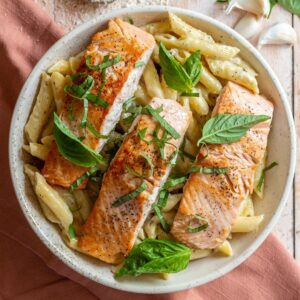
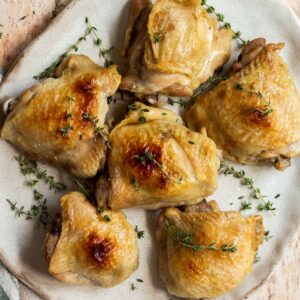
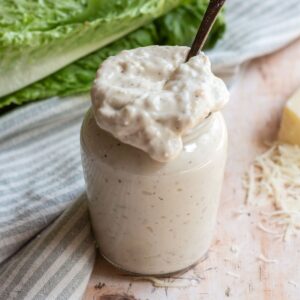
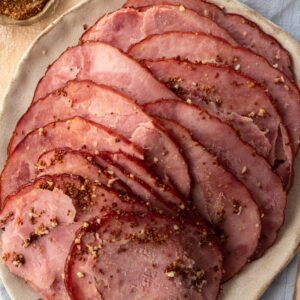
Leave a Reply